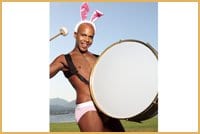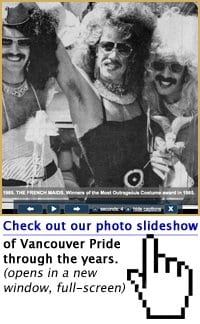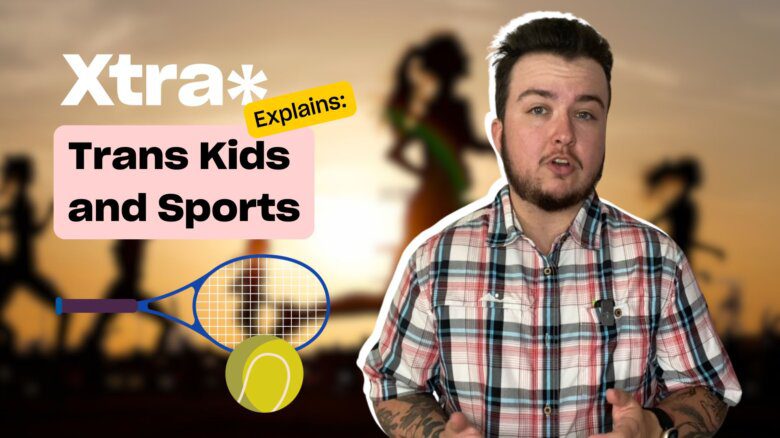
Credit: TJ Ngan photo
It was 1978. The day was sunny, not too warm. She and her girlfriend had joked about wearing paper bags over their heads, but headed out anyway to see this march they had heard so much about.
Back then, Pride events were sometimes dangerous, always exhilarating.
It was not unreasonable for participants to fear for their safety. Taking part in a gay march or even attending one was fast becoming a rite of passage into the community.
By 1978, Vancouver’s first official Pride parade was still three years away, but Pride events were gathering momentum. Six years earlier, the city’s small gay community had hosted its first Gay Pride Week from Jun 30 to Jul 2, 1972. It held its first Gay Unity Week in 1977.
When Norbury and her girlfriend arrived at the march’s gathering spot a year later, they found a group of about 45 people, mostly men in “shorty-short shorts, moustaches, shag haircuts and the odd headband or two” just walking down Thurlow St.
“I’m sure they didn’t have a permit,” Norbury remarks.
The march petered out on Pacific Blvd after three of four blocks. There were no floats; just “some hastily executed cardboard signs.” The street wasn’t closed to traffic and there was no police presence.
“It was exciting,” remembers Norbury. “Here was something that specifically addressed the community.”
Reaction from bystanders was muted.
“No negative reactions in that understated Vancouver way because no one really understood what it was,” Norbury says. “There was a ‘What was that?’ kind of reaction; ‘who are those people?’
“Little did I know what it was to become. If only I had a crystal ball…”
***
Tom Graff participated in his first Pride march in 1979.
It was euphoric, he says.
“I remember thinking how funky and community-oriented it all was. The brave participants were more like a sentimental trip down hippy memory lane.”
It was fun, he continues. “Outrageous, but definitely outside boxes of the ’60s and ’70s here in Vancouver.”
Graff credits the driving force behind that march, the late Malcolm Crane, with giving it some of its enduring features. “I felt some disappointment that leather and acting out were main features. But Malcolm wanted anything to happen. We needed a presence. And the August date was spectacularly non-Stonewall-ish.”
James Loewen’s memories extend back even further to “a gay picnic, organized I think by GATE [the Gay Alliance Toward Equality] in 1972 or 1973 in the Ceperley Park area of Stanley Park.”
Loewen remembers a group of about 30 people at that picnic — “mostly young gay men, a few older men, and an amazingly gorgeous transsexual woman, Lena.”
He was less impressed by his first Vancouver Pride, circa 1981.
It was “a tawdry parade that took place in and around Nelson Park. The group seemed too small in number considering the West End’s then-sizable gay population.
“I think this had a lot to do with many people still being in the closet,” he reflects. “For me there was nothing about that event that drew me.
“Perhaps I was fully put off when I saw one very out and outrageous gay personality of that era in a Nazi uniform,” he continues. “That just seemed so harsh and out of context.
“I didn’t take any photos that day,” the photographer says.
But he persevered. “In 1986 I began regularly photographing the Vancouver parades and they seemed to be getting much better. That year a massive rainbow of balloons by Little Sister’s created a strong and positive visual.”
The following year, another strong visual left its mark as well. “In 1987, Kevin Brown, and a few other very brave people rode in a convertible in the parade and put a face to people living with AIDS.”
For Loewen, 1990 proved to be a turning point for both the parade and the city as Vancouver’s gay community welcomed the Gay Games.
“If there had been anyone still in the closet that year, Celebration ’90 shook them out. The city was filled with beautiful and athletic gay people and that year our parade was many times larger, louder, happier and more musical than ever before.’
***
Bill Monroe isn’t sure when he attended his first Vancouver Pride parade. It was 1983 or 1984, he says. He was sitting on the balcony of his apartment one Sunday when he suddenly saw floats go by.
“My god, this must be the Gay Pride parade,” he remembers thinking. “I was just totally shocked. It was fascinating for me.”
Fascination soon gave way to active engagement.
“I remember being on a float as the Queen in 1990, waving and giving an address to the crowd. Before that, I emceed the shows at Sunset Beach.”
Monroe regularly adorns Pride floats to this day, which he prefers to walking (“You’re crippled by the end of it if you’re in heels”).
He has one piece of advice for Pride goers about to board a float: “Don’t drink a lot of water if you’re on a float. Pee before you go. A lot of water is bad. There’s a huge lineup for the portapotties, and that takes the glamour out of it.”
***
Scoot has been leading Vancouver’s Pride parade on her motorcycle since 1986 with the dykes on bikes contingent.
“I heard about the parade and decided to get involved. I just showed up. I thought it would be a fun thing to do,” she says.
“When I came out, I came out. I wanted people to know.”
Scoot remembers the 1986 parade as being “really tiny — 20 floats and three or four bikes.”
But she loved it from the very first moment. “I was excited. I smiled through the whole thing, honking my horn, waving my hand.”
The crowds, she remembers, were not huge either. “Some people were surprised. Some people were happy at seeing people being out because maybe they couldn’t be out. I remember seeing some people not wanting to be photographed.”
Scoot has since ridden at least 20 times in the parade and her enthusiasm remains undimmed. “When you ride the bikes, you’re at the front of the parade. People get excited at seeing you — and you get the best parking spots and get to see the rest of the parade!” she laughs.
Jim DeYoung has been following right behind Scoot and the other dykes on bikes for the last 10 years.
DeYoung is a Knight of Malta, and he and his fellow members of that fraternal order are the parade’s flag bearers.
“I felt proud that I was doing it,” he remembers of his first time. “The crowd was bigger than I thought it could be. And it gets bigger with each year.”
Ten years later, he remains surprised by the spectators’ enthusiasm. “We’re always greeted by warm applause, cheers and we’re just a bunch of guys in black pants, black hats, black ties and white shirts.”
Colin McKenna and his mother have garnered some of the loudest applause in the parade every year since 2000. Not surprising since they walk in the Parents and Friends of Lesbians and Gays [PFLAG] contingent.
“I wanted to be there along with my mom in order to show others that being gay and having your parents accept you for who you are can be a reality,” says Colin.
“The first year was very emotional,” he continues. “As someone who’d only been out for a short period of time back in 2000, there I was, marching for all to see in a parade that really held no secrets about who I was.”
“My husband was very worried about homophobia,” adds Colin’s mom, Aideen, “and feared that the parade (and I) might be the target of violence.”
She was amazed and moved by the crowd’s response to PFLAG. “Young people sitting on curb sides getting to their feet when they saw the PFLAG contingent and applauding, smiling, many in tears — open emotion on their faces.”
Afterwards, she says, “I attended the festival for a while, went for lunch with my son, let my worried husband know that no one had attacked me… [and] fell asleep — I’m not exactly a party person,” she laughs.
“The parade is one of our most important events of the year,” states Colin. “Being in the parade gives us exposure that’s hard to get throughout the rest of the year. Annually we have people approach us at our festival booth after the parade, sharing happy and sad stories with us, coming to thank us for being there for them and offering their support for us in future. It’s our favourite day of the year, by far.”
***
In the last 30 years, Vancouver’s Pride parade has grown from an activist, defiant and joyful march into a major civic occasion attracting officialdom, unions and corporate sponsors, and larger audiences.
With this growth have come changes.
With these changes, does the parade hold up a less faithful mirror to the community than it once did, if it ever did?
Of course, opinions differ. “I believe that our parade has defeated the boring parades of the PNE, etc. But is that a good thing?’ asks Graff. “Compared to the first parade, this modern one is semi-slick but not campy enough, not really understanding of the audiences it pleases.”
Norbury acknowledges that the parade has gained momentum in the last 10 years, but feels it has become more commercial, a bit lacklustre. She regrets the lack of grassroots feelings.
Still, she says, “the whole vibe is inclusive. It’s a little pocket of diversity in a world that really isn’t that way.”
Monroe thinks one reason the parade is getting bigger is because fewer people are closeted than before. “Younger people are freer. They can walk in the parade. The overall freedom, the acceptance of straight people for the parade, these changes are all good,” he says.
Graff would like to see the parade branch out beyond the gay village. “It should be in other parts of the city, circulating each year,” he believes.
Colin McKenna thinks “the Vancouver Pride Society, despite challenges, does an incredible job year after year.”
“As the crowd grows, so does the parade,” he notes. “As a group we’ve noticed a change in the crowd, as it becomes more mainstream. This necessitates a need for us to really educate more as we move along the parade route.”
DeYoung feels that all the changes have been positive, like the presence of the City of Vancouver in the parade. “City Hall involves gay groups in municipal functions. We get invitations now. The degree of acceptance is the strongest it’s ever been. The parade has been an element in gaining that respect, that acknowledgement.”
Riding up front in the dykes on bikes posse, Scoot sees the crowds getting bigger and straighter. “Straight people go to the parade because it’s the best! I know coworkers, burly straight boys in construction, who go. They love it! It’s entertaining,” she says.
Loewen also appreciates the straight spectators’ support. “I love seeing increasing numbers of non-gay people participating and the crowds of spectators increasing. I love hearing more music, seeing the politicians challenged, seeing fresh batches of young people wide-eyed and accepting, many unaware, it seems, of what went on before.
“This year is going to be crazy,” he predicts. “A new, much longer parade route. More participants and viewers than ever before. I’m looking forward to it!”

 Why you can trust Xtra
Why you can trust Xtra


